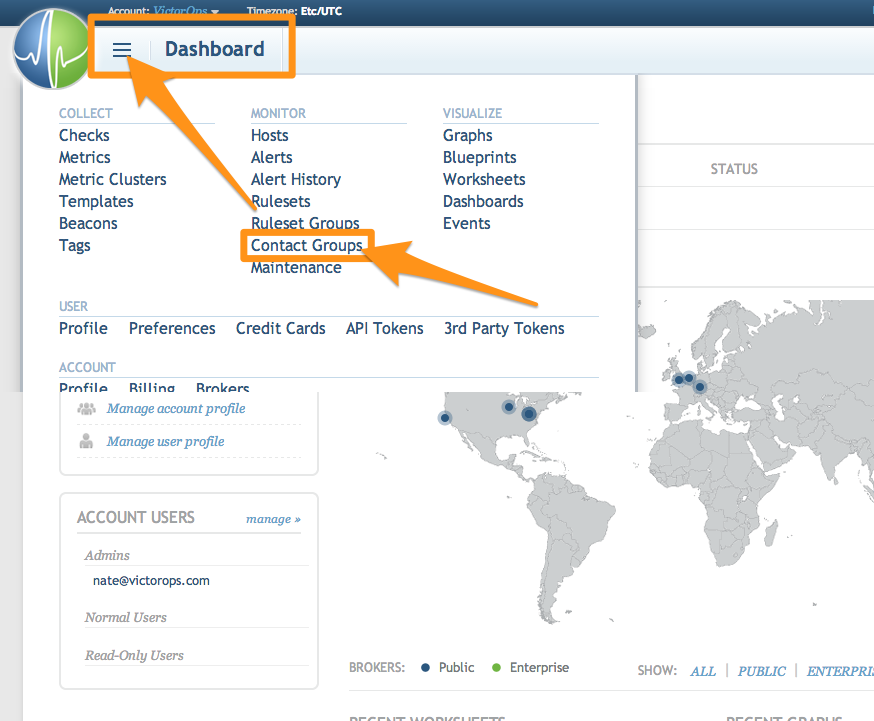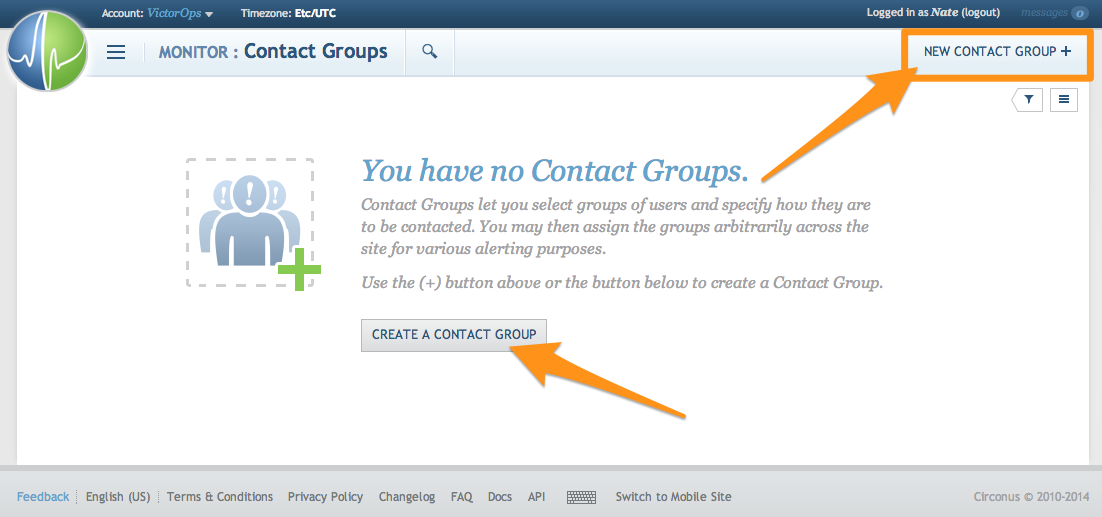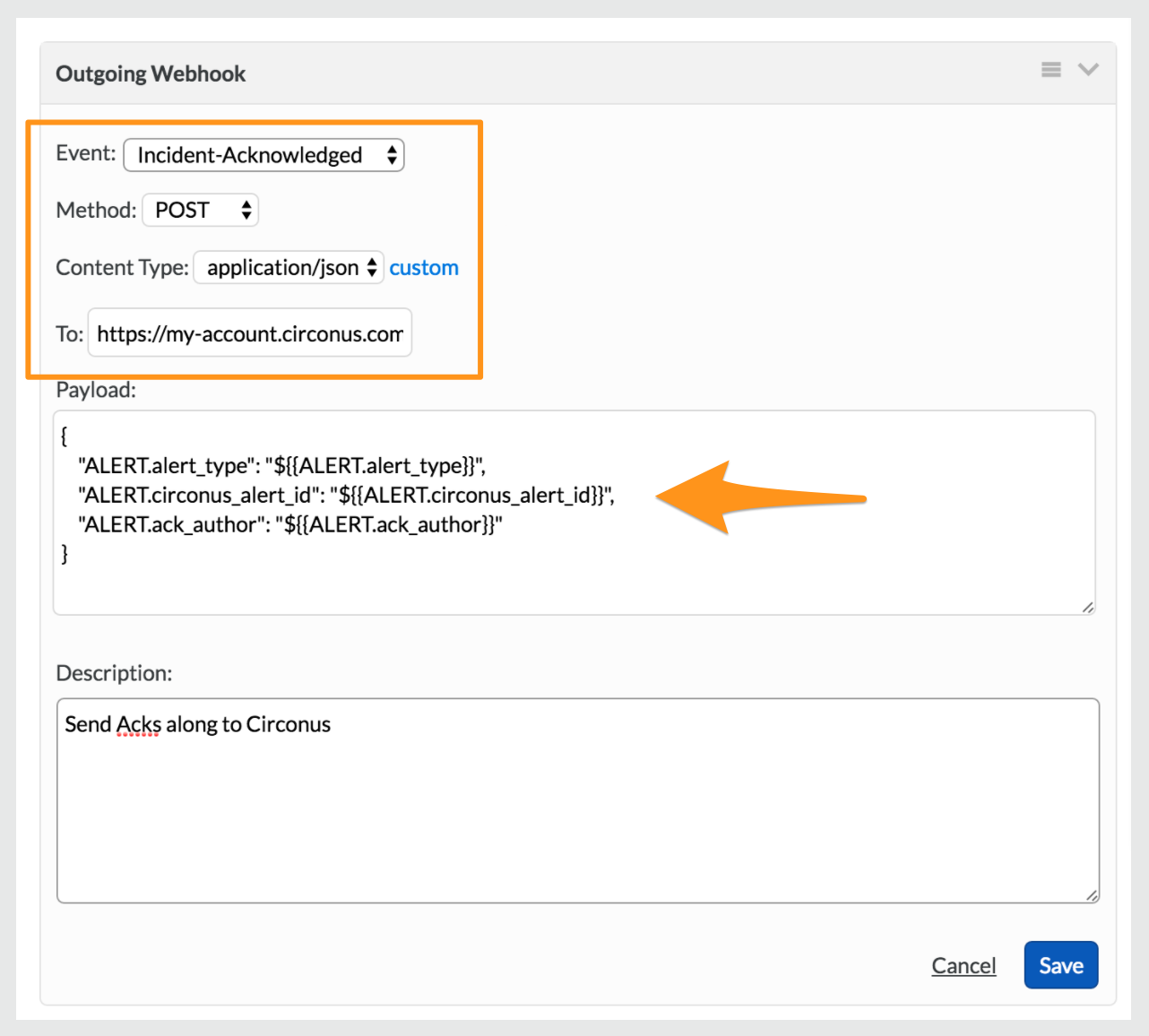Splunk On-CallのCirconusインテグレーション 🔗
CirconusとSplunk On-Call (旧VictorOps)のインテグレーションにより、Circonusの連絡先グループとしてSplunk On-Callを追加し、Splunk On-Callのタイムラインにアラートを送信できるようになります。
Circonus は、複数のモニタリング、アラート、イベントレポート、分析ツールを1つの統合ソリューションに統合します。あらゆるシステムから、あらゆるアプリケーションで、あらゆるデータを使用し、リアルタイムで可視化します。
要件 🔗
このインテグレーションは以下のバージョンのSplunk On-Callと互換性があります:
はじめに、Growth、またはエンタープライズ
In Splunk On-Call 🔗
Splunk On-Callで、、 の順に選択します。Circonus を選択します。

インテグレーションがまだ有効になっていない場合は、Enable Integration を選択してエンドポイントURLを生成します。$routing_key セクションは、必ず使用する実際のルーティングキーに置き換えてください。ここに表示されているものを、実際に使用するルーティングキーに置き換えることが不可欠です。最後のフォワードスラッシュ以降は、すべて自分のキーに置き換えてください。例えば、routing_key値を database と仮定すると、次のようになります:
………36437/**$routing_key** ==> ……..36437/database
Splunk On-Callでルーティングキーを設定するには、 を選択し、 と を選択します。
ルーティングキーの詳細とベストプラクティスについては、ルーティングキー <routing-keys> を参照してください。
In Circonus 🔗
Circonusインターフェイスでインテグレーションを設定するには:
Circonusダッシュボードから左上のドロップダウンを選択し、連絡先グループ を選択します。

# 新しい を作成します。

名前を付け、 オプションで Splunk On-Call を選択します。OK を選択します。
Splunk On-CallインテグレーションページのRESTエンドポイントURLからAPIキーをコピーします。前回のSplunk On-Callセクションで説明したように、メインタイムラインから Settings を選択し、次に Integrations と Circonus を選択します。
APIキーをCirconusのボックスにコピーします。Team フィールドでは、このインテグレーションに使用するSplunk On-Callルーティングキーを定義できます。
Splunk On-Callルーティングキーについてさらに詳しく知りたい場合は、Splunk On-Callでルーティングキーを作成する を参照してください。

アラートレベルとアラートオプションを調整して、Splunk On-Callが必要なときだけインシデントを作成するようにします。
テストメッセージを送信して、すべてが適切に設定されていることを確認すると、Splunk On-Callタイムラインに情報メッセージが送信されます。
Circonusへの承認の送信 🔗
Circonusに承認を返送するには、Splunk On-Callの カスタムアウトバウンドWebhooks を使用します。
Splunk On-Callで新しいアウトバウンドWebhookを作成します。
{ “ALERT.alert_type”: “ :math:`{{ALERT.alert_type}}」, 「ALERT.circonus_alert_id」: 「 {{ALERT.circonus_alert_id}}”, “ALERT.ack_author”: “${{ALERT.ack_author}}” }`
注釈
Splunk On-Callを使用して解決されたアラートで、Circonusでの承認をクリアしたい場合(アラートを再度トリガーできるようにする場合)、イベントフィールドを Any-Incident に設定します。そうでない場合は、Incident-Acknowledged に設定すると、Circonusでの承認は通常通り期限切れになります(アラート条件が最初にクリアされない場合)。
(オプション) Splunk On-Callを使用してアラートを確認する場合、Circonusのアラートはデフォルトで30分間確認されます。これを変更するには、Webhook URLのクエリ文字列に以下のオプションを追加します:
?acknowledge_minutes=X
注釈
アラートを確認するSplunk On-Callチームメンバーは、メトリクスがアラートされているアカウントへの書き込み(通常または管理者)アクセス権を持つCirconusアカウントを持っている必要があります。Splunk On-CallユーザーとCirconusユーザーをリンクするには、CirconusのユーザープロファイルページでSplunk On-Callユーザー名を入力します。
